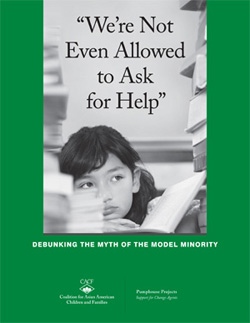How Asian-Americans with $825B purchasing power influence buying behaviors: report
Asian-Americans’ impact and influence are shifting and growing, according to “Asian-Americans: Culturally Diverse and Expanding Their Footprint,” a Nielsen report released on May 19. Members of this diverse segment are starting businesses, creating jobs and contributing to the U.S. economy, with a current $825 billion in consumer buying power—which is expected to rise to $1.1 trillion by 2020.
As the fastest-growing U.S. population segment with an expanding geographic footprint in the Midwest and South – beyond traditional immigrant enclaves in the West and Northeast – the Asian-American impact on consumer preferences is rippling across mainstream America, with far-reaching implications for brands and marketers.
As part of Nielsen’s ongoing efforts to provide insights that help marketers better serve Asian-American consumers, the report highlights the different ways in which this particular segment is exerting cultural and economic influence on the U.S. mainstream market today through a regional lens.
“If marketers and companies want to be successful, it is imperative they develop growth strategies that account for Asian-Americans’ diverse ethnicities to better resonate with the cultural nuances of this unique multicultural community,” said Betty Lo, vice president, Community Alliances & Consumer Engagement, Nielsen. “This segment not only has culturally specific tastes and preferences, but also buying behaviors that are unique to geographic regions. In addition, U.S. Census projections show that Asian-Americans are on track to become the largest immigrant group in the nation by 2055. As entrepreneurs, tech titans and digital content consumers, Asian-Americans’ cultural identities will play a unique role in impacting the U.S. economy and marketplace.”
“Nielsen has been a longtime partner to Asian-American and Pacific Islander-serving organizations by providing culturally sensitive data about our multifaceted community,” said Nita Song, co-chair, Nielsen Asian Pacific American External Advisory Council and President, IW Group. “Without these diverse insights, we would not be aware of the tremendous buying power and cultural influence that Asian-Americans have on the mainstream market, which is why it is so important to say ‘yes’ if the opportunity to participate as a Nielsen household arises.”
Highlights of the report
Geographic Expansion
• Asian-Americans are diverse, hailing from over 40 countries of origin. The majority of recent Asian immigrants migrated to large cities; 63 percent live in 15 U.S. cities. The top five destination metro areas for recent Asian immigrants are New York-Newark-Jersey City, NY-NJ-PA; Los Angeles-Long Beach-Anaheim, CA; San Francisco-Oakland-Hayward, CA; Washington-Arlington-Alexandria, D.C.-VA-MD; and San Jose-Sunnyvale-Santa Clara, CA.
• Between 2009 and 2014, immigration, relocations, and new births have led to a population increase of 33 percent (over 1.1million) in the South and 29 percent (538,000) in the Midwest.
• The South saw the highest growth in Asian-American buying power (43 percent) between 2010 and 2015 and is projected to continue to see the highest growth in the next five years.
Entrepreneurial Economic Drivers
• Of the 87 U.S. startup companies valued at over $1 billion with the potential to become publicly traded on the stock market, 19 were founded by Asian-American immigrants.
• In the U.S. Census’ recently released Survey of Business Owners, the number of Asian-American-owned businesses grew by 24 percent between 2007 and 2012 and claimed the highest percent sales increase (38 percent) of any racial or ethnic group.
• Of the 11.6 million Asian-Americans in the workforce, about 70 percent are employees of for-profit businesses, 12 percent are government employees, 7 percent work for nonprofits, and 9 percent are self-employed, while 1 percent are unemployed.
Unique Culinary Tastemakers and Environmentally Sustainable Consumers
• Seventy-nine percent of Asian-Americans agree they prefer cooking with fresh food rather than canned or frozen food. On average, Asian-Americans purchase 69 percent more fresh seafood, 72 percent purchase more fresh vegetables, and 29 percent purchase more fresh fruits than the general population. Asian-American shoppers say they are more likely to buy and pay more for recyclable and eco-friendly products than the general population.
• More and more consumers of other races and ethnicities are adopting Asian-American cooking styles and habits. Items such as soy milk, seaweed, Asian curries and many others are entering mainstream markets.
Tech Titans and Content Consumers
• Nearly half of Asian-Americans watching English TV also watch TV in an Asian language (dual-language viewers).
• Asian-Americans outpace the general population in ownership of all three major Internet personal devices: smartphones, household computers and tablets. Online purchasing sentiment outpaces the general market, as well.
• Asian-Americans take the lead in using multimedia devices, averaging almost twice the minutes per day of the general population; they spend half the time on live TV as the general population. Additionally, Asian-American households have a much lower rate of DVR usage (43 percent) than the general population (62 percent). Sixty-eight percent of Asian-American households have subscription video on demand (SVOD) services, a 21 percent higher rate than the general population.











